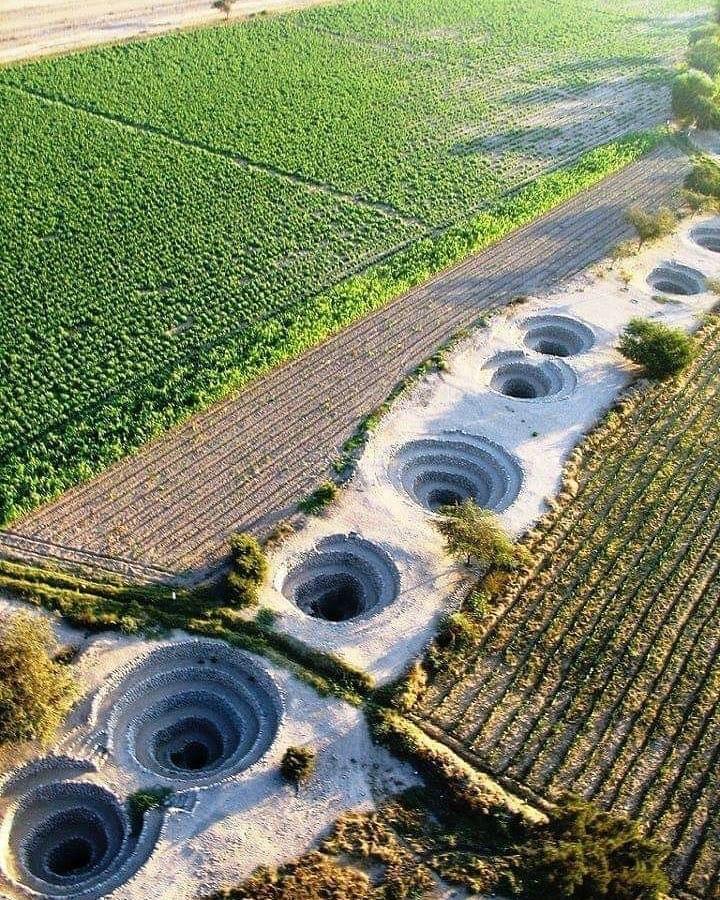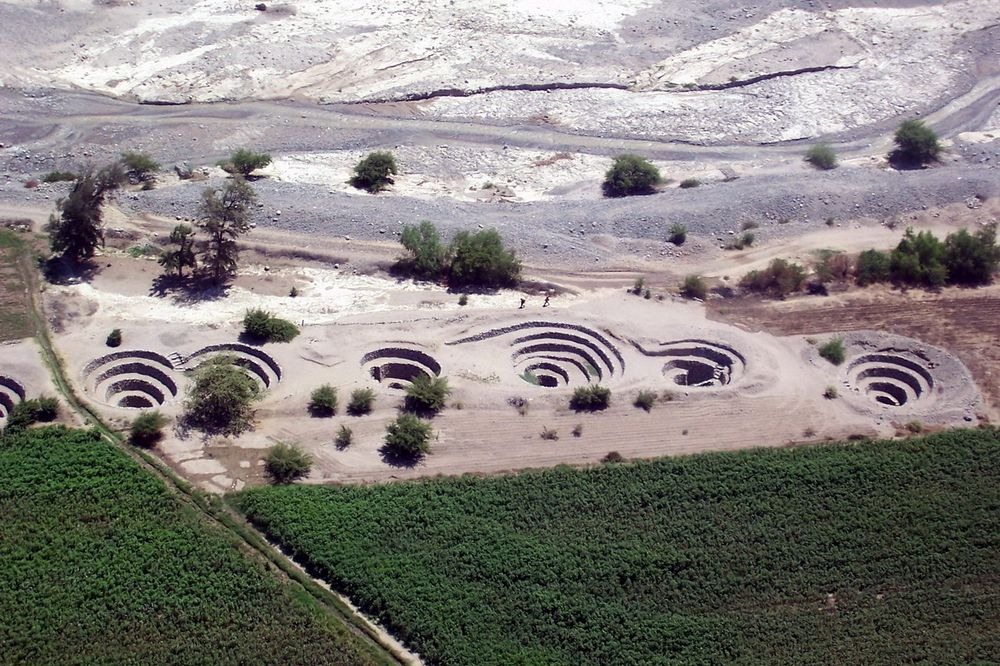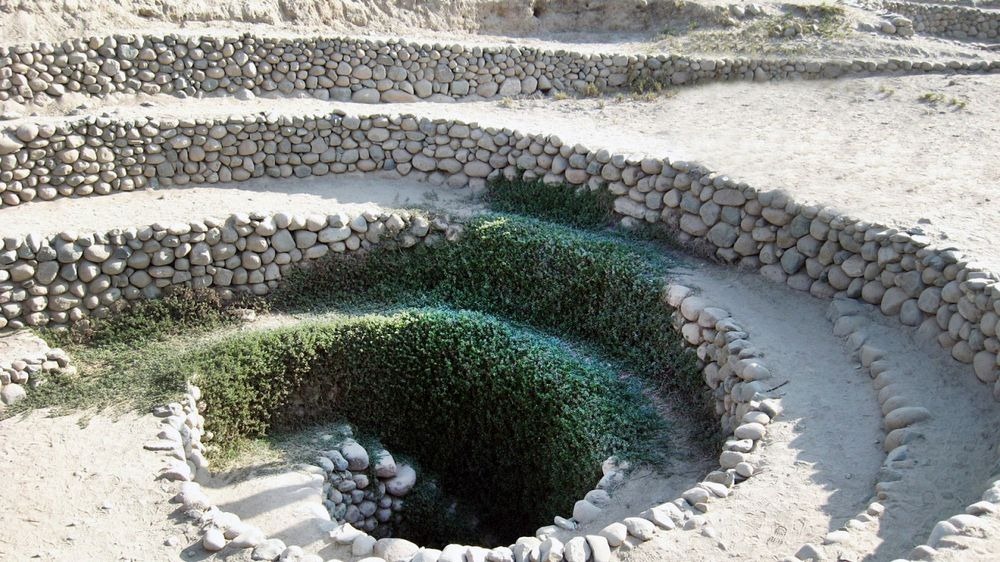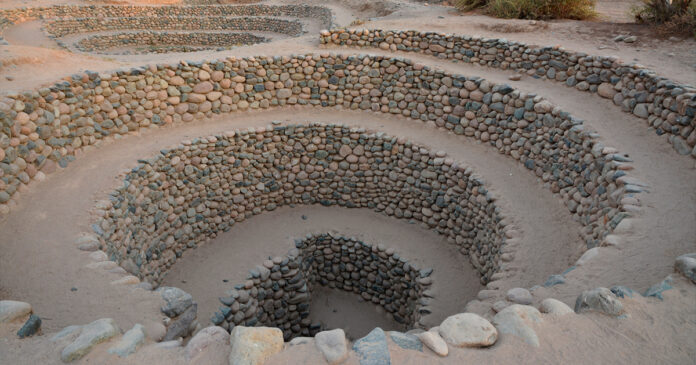The Cantalloc Aqueducts, located in the desert of southern Peru, stand as a testament to the remarkable engineering prowess of the Nasca people. Constructed approximately 1,700 years ago, these aqueducts were not only a practical solution to the region’s water scarcity but also demonstrate the Nasca’s advanced understanding of land, water, and air dynamics. With their intricate spiral structures and ingenious design, the Cantalloc Aqueducts continue to provide water for irrigation and domestic use to this day.
The Ingenious Aqueduct System
The Cantalloc Aqueducts are the most renowned segment of the aqueduct system developed by the Nasca civilization. Faced with the challenges posed by prolonged droughts and limited water sources, the Nasca people harnessed the underground water table by employing a sophisticated network of aqueducts. Rather than relying on conventional wells, they devised an intricate system comprising spiral structures known as ojos, as well as underground aqueducts and surface channels collectively called puquios.

The Spiral Structures and Wind Funneling
Initially assumed to be wells and access points for maintenance, the spiral-shaped ojos were found to serve a dual purpose upon further examination. Rosa Lasaponara and her team from the Institute of Methodologies for Environmental Analysis in Italy utilized satellite imagery to gain insights into the irrigation system. Their findings revealed that the spiral holes act as wind funnels, channeling air down into the underground channels. This ingenious design effectively propels water through the aqueducts, functioning akin to a pump.

Age and Cultural Significance
Determining the precise age of the Cantalloc Aqueducts presented a challenge, as the materials used in their construction cannot be carbon-dated. However, the settlements connected to the channels provide compelling evidence of Nasca origin. The aqueducts are believed to have been built by the Nasca people themselves, challenging the previously held notion that they were of Spanish origin. The Nasca Aqueducts have now been submitted for consideration as a UNESCO World Heritage Site, recognizing their historical and cultural significance.

Enduring Legacy
The Nasca Aqueducts stand as a remarkable testament to the Nasca people’s advanced knowledge of geology, hydrology, and engineering. Despite the passage of nearly two millennia, these aqueducts remain operational, serving as a lifeline for subsequent societies inhabiting the region. The creation of fertile oases amidst the arid desert landscape is a testament to the Nasca’s ingenuity and their ability to harmonize human needs with the natural environment.

The Cantalloc Aqueducts in Peru, constructed by the Nasca people over 1,700 years ago, represent a remarkable engineering marvel. These ancient aqueducts, with their spiral structures and intricate design, demonstrate the Nasca’s ingenuity and advanced understanding of water management. The ongoing use of these aqueducts today is a testament to their enduring legacy and the remarkable skills possessed by the ancient inhabitants of this region. As efforts continue to recognize their cultural and historical significance, the Nasca Aqueducts stand as a testament to the harmonious interaction between humans and their environment.
